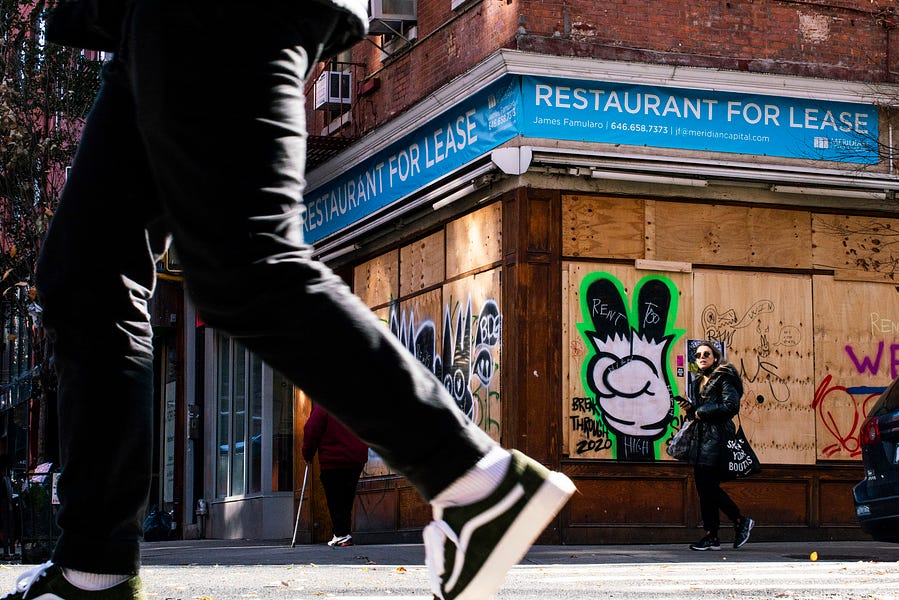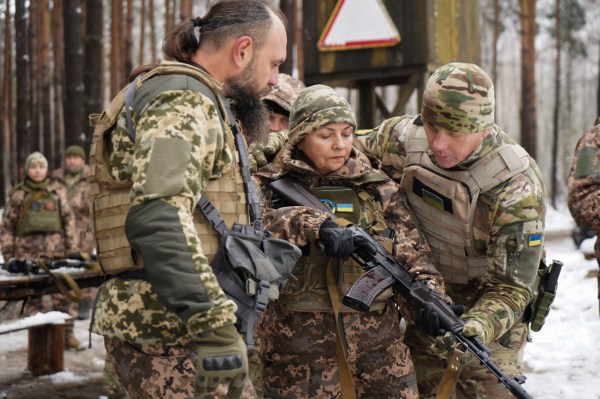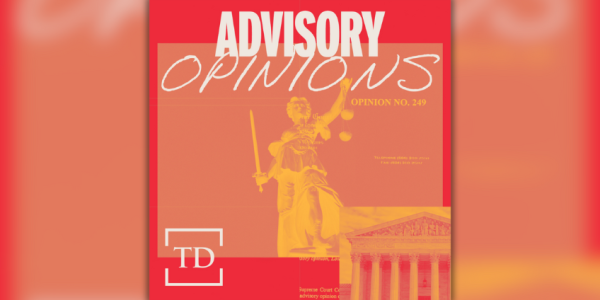“COVID fatigue” is more than a description of one of the novel coronavirus’ common symptoms. It’s also an apt phrase getting play even in medical publications to describe the exhaustion many of us are feeling as the pandemic has upended most aspects of our social and professional lives for almost a year.
It’s playing out in state capitals, too, as governors and legislatures tussle over the severity and duration of COVID-19 closures. With the perhaps infamous exception of South Dakota, every state has some coronavirus restrictions in place. Mask mandates, caps on business occupancy, curfews, travel bans, shutdowns of certain business types (bars, gyms, nightclubs), limits on indoor gatherings—including visits by people who don’t share the same household—you name it.
Some restrictions apply statewide. Others are under the control of local officials or are pegged to COVID statistics such as the rate of positive tests or hospital capacity.
Extreme actions to slow the disease’s spread were justified, especially during the pandemic’s early stages. Medical professionals weren’t clear exactly how the virus was transmitted. Existing vaccines and therapeutics didn’t work. Governors, who have the legal authority to issue emergency orders, had lots of leeway to clamp down social and commercial activity.
But, as The Dispatch’s David French has noted, whether a crisis eases or lingers, regular constitutional order eventually must return.
Eventually.
It’s not happening fast enough for folks in a lot of places. There’s a credible campaign in California to recall Gov. Gavin Newsom, whose poll numbers just went underwater.
Hawaii Democrat David Ige is the nation’s least popular governor, as Hawaiians blame him for the state’s economic collapse and mishandling of federal relief money. The Hawaii National Guard was on alert as early as May, preparing for civil unrest related to Ige’s handling of the pandemic.
New York Gov. Andrew Cuomo and New York City Mayor Bill de Blasio feuded constantly even before the pandemic. In October, things escalated quickly. The mayor “unexpectedly announced that he intended to close down schools and nonessential businesses in parts of Brooklyn and Queens, where the coronavirus was surging in communities with large Orthodox Jewish populations,” the New York Times reported. De Blasio said he had talked with state officials.
But he hadn’t. Cuomo responded by reopening schools and businesses in areas with lower infection rates and closing others.
“A law doesn’t work if you’re too incompetent or too politically frightened to enforce it,” Cuomo said.
If you’re unhappy with your state’s handling of emergency orders, 19 states allow voters to recall elected officials. But that’s a long and costly process. It’s much easier to get your state legislature to act.
Governors use emergency declarations regularly to respond to natural disasters—earthquakes, blizzards, floods—or civil disorder. When the state needs to exercise police powers and the legislature may be out of session or otherwise too slow to respond, sometimes governors need extraordinary powers. It’s supposed to be temporary, and within limits.
“Although governors need to be able to respond to emergencies quickly, legislatures have an important role in making sure these powers are not abused and that they do not undermine the separation of powers vital to our democratic system of government,” reads a report issued in late January by the National Conference of State Legislatures.
That depends on where you live. The NCSL’s review noted that, in 15 states, governors can issue emergency declarations of indefinite duration and without any legislative oversight or restrictions. The other 35 place some limits on the governor’s power. Some require an extension to be approved by the legislature or other elected executive branch offers. Most give the legislature authority to revoke or revise the orders.
My home state, North Carolina, is one of the 15 where the governor has open-ended powers.
Scholars of state government typically rate North Carolina’s governor as one of the nation’s weakest, institutionally. The state Constitution says the governor must live in Raleigh, give the General Assembly information about “the affairs of the state,” and submit a budget. The governor also has to execute the laws the legislature passes and can call special sessions.
But that’s about it. The governor can serve only two terms. It takes a mere three-fifths majority of both legislative chambers to override a veto. He has no say in redistricting legislation.
The legislature can give the governor power or take it away. This unexpectedly poses a problem when a governor decides to turn up his power to 11. Roy Cooper, a Democrat entering his second term, has done just that using the Emergency Management Act.
At a January 27 news conference, the governor announced he was extending his COVID-19 restrictions by another month, and maintaining a ban on evictions until the end of March.
Under the extended order, residents are asked to shelter at home unless they’re buying groceries, driving to work, or going to a doctor or pharmacy. Most indoor gatherings are still outlawed. Restaurants must abide by tight indoor occupancy limits. Private bars that lack kitchens or outdoor seating are closed. K-12 public schools remain virtual only in most of the state.
When the North Carolina and Duke basketball teams renew the best rivalry in college basketball Saturday in Durham (Go Heels!), the Cameron Crazies will have to display their body paint in their dorm rooms. No spectators allowed.
The Republican-led General Assembly tried twice last year to rein in Cooper’s power, passing legislation allowing gyms and private bars to reopen if safety protocols were in place. Cooper vetoed both. Republicans needed to persuade seven Democrats in the House and one senator to defy the governor. The caucuses remained united. The vetoes stood.
Such conflict here isn’t unusual, said Chris Cooper, a political science professor at Western Carolina University (and no relation to the governor), in an email. Democrats controlled at least one chamber of the General Assembly from Reconstruction until 2011. They guard their powers jealously.
“North Carolina political history is marked by legislative/gubernatorial tensions — with the party in power of each branch trying to consolidate power in the branch where they’re currently advantaged. We saw this when the Democrats, who had been in control of the legislature for a century, didn’t want to give veto power to the governor (which was more likely to be under Republican control),” Cooper said.
“COVID and the Emergency Management Act have certainly been a boon to gubernatorial power in North Carolina. When added to the increase in his informal powers, as might be expected of an executive branch official in a time of crisis, it has made the power of the governor seem much more expansive in a short period of time.”
North Carolina lawmakers aren’t alone. The NCSL report says more than 30 states considered measures in 2020 to limit a governor’s emergency power. In 10 states, they were adopted. Legislatures in at least 26 states already have proposals in the hopper this year to restore some (or more) accountability to emergency management.
Lauren Horsch, a spokeswoman for state Senate leader Phil Berger of Eden, told The Dispatch in an email that revisions may be in order, but the Republican caucus hasn’t gotten specific. The goal, she said, was “to hold the governor accountable, and keep decision making transparent. We are a nation built on checks and balances, and no one person should have the sole authority to shut down the entire state.”
In a bit of a twist, the North Carolina General Assembly also has sweeping powers under the EMA. Lawmakers can invoke a state of emergency by a joint resolution. Just as only the governor can rescind his own emergency orders, the legislature alone has the power to nix an emergency order it issues. One branch of government can’t overrule the other. The legislature has chosen not to use this authority because lawmakers generally aren’t comfortable invoking police powers, Andy Taylor, a political science professor at N.C. State University, told The Dispatch.
But even Roy Cooper may be getting COVID fatigue. At a Tuesday afternoon news conference, Cooper and Republican state school Superintendent Catherine Truitt announced a goal of reopening schools for in-person learning. Cooper barred public K-12 schools from full-time, in-person learning last March. The ban remains. When the school year opened in September, only 21 of the state’s 115 school districts used a hybrid system, rotating students between classroom and virtual instruction. The other students have relied on Zoom.
Earlier Tuesday, Truitt said she and the governor would “sing from the same songbook” about getting kids back in classrooms. They sent a letter to school boards and local superintendents urging but not mandating schools to reopen.
Cooper’s responding in part to a bill filed Monday that would require schools to offer full-time in-person instruction while giving parents the option to continue virtual classes. There may be room to compromise.
What’s unclear, Taylor says, is whether lawmakers will have the stomach to revise the EMA in an effort to reduce restrictions on the private sector over Cooper’s inevitable objections.
The pandemic will subside. Life will become more normal. The Democratic administration and the Republican legislature will engage in the usual fights over taxes, spending, health care, and regulations.
A desire to get beyond COVID, rather than slog through regulations to prepare for another lengthy disaster that may not occur for decades, could play out in other state capitals, too.
“The problem with government,” Taylor said, “is that it tends to prepare for the last crisis.”
Rick Henderson publishes the Deregulator newsletter. He has been managing editor and Washington editor of Reason, and until recently, was editor-in-chief of Carolina Journal in Raleigh, N.C. He’s on Twitter @deregulator.






Please note that we at The Dispatch hold ourselves, our work, and our commenters to a higher standard than other places on the internet. We welcome comments that foster genuine debate or discussion—including comments critical of us or our work—but responses that include ad hominem attacks on fellow Dispatch members or are intended to stoke fear and anger may be moderated.
You are currently using a limited time guest pass and do not have access to commenting. Consider subscribing to join the conversation.
With your membership, you only have the ability to comment on The Morning Dispatch articles. Consider upgrading to join the conversation everywhere.